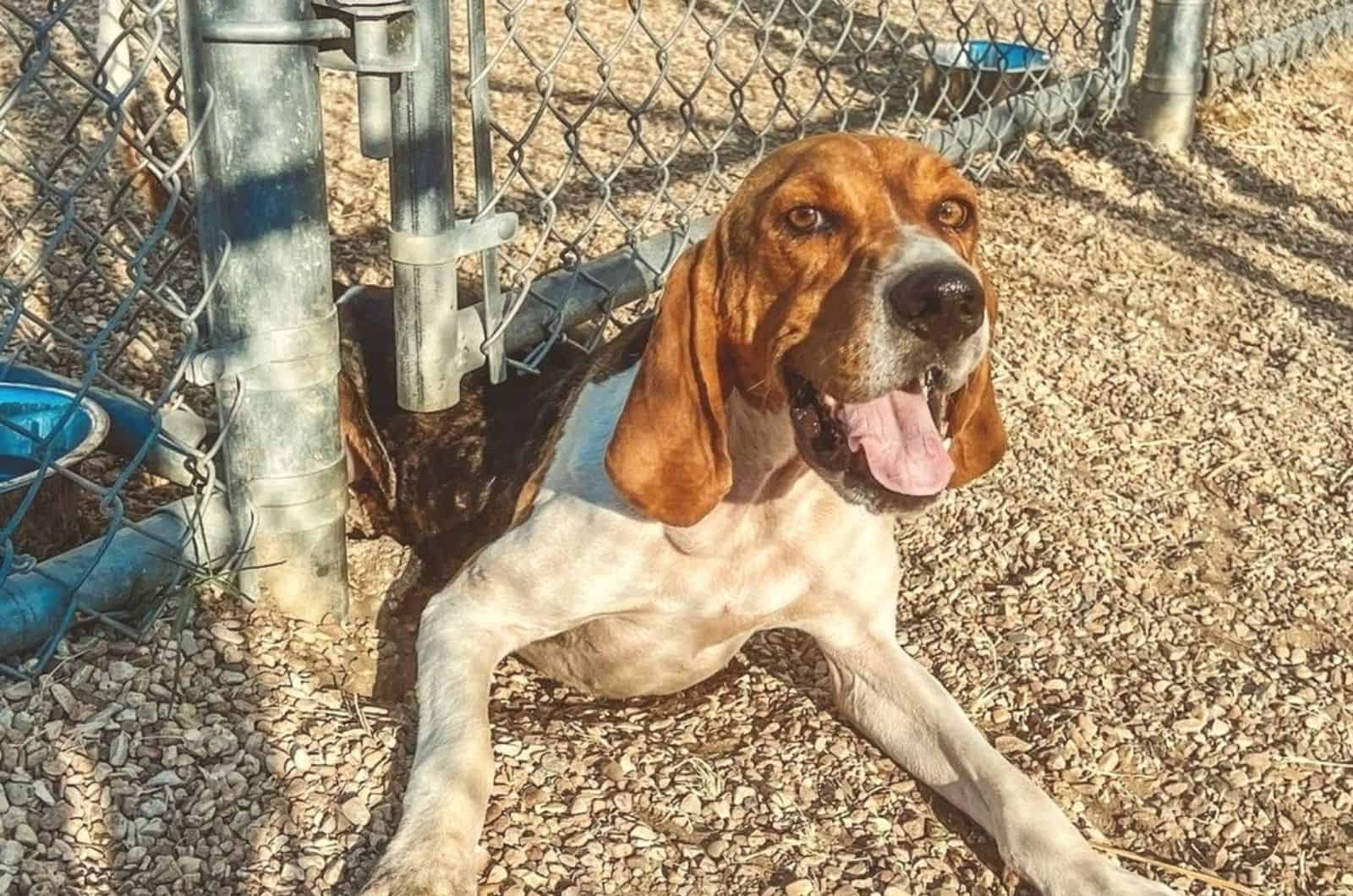If you’re thinking about bringing a Coonhound Lab mix into your home, you can find out everything you need to know right here.
We will provide you with a summary of the benefits and drawbacks of the top options to assist you in making the decision that is best for your family. I’ll also tell you what you can generally anticipate if you mix a Labrador with a Coonhound.
Any breed that is actually a crossbreed of a Labrador Retriever and a hound dog is referred to as a Labrador Hound mix.
Examples that are frequently used are the Treeing Walker Coonhound Lab mix, the Basset Hound Lab Mix, the Plott Hound Lab Mix, as well as the Blue Tick Hound Lab Mix. Consider that every mix-breed dog will receive a distinct genetic background from each of its parent breeds.
However, today, we are focusing only on the high energy Coonhound Lab mix, and all of the traits that this dog holds in its sleeve. You may be surprised that this one is, in our opinion, the best one out of lab hound mixes, and we will explain why!
These great companions are one of the most loyal and trainable crossbreeds out there. Thanks to their high energy levels, they will always be ready to play.
What Is A Coonhound Lab Mix?
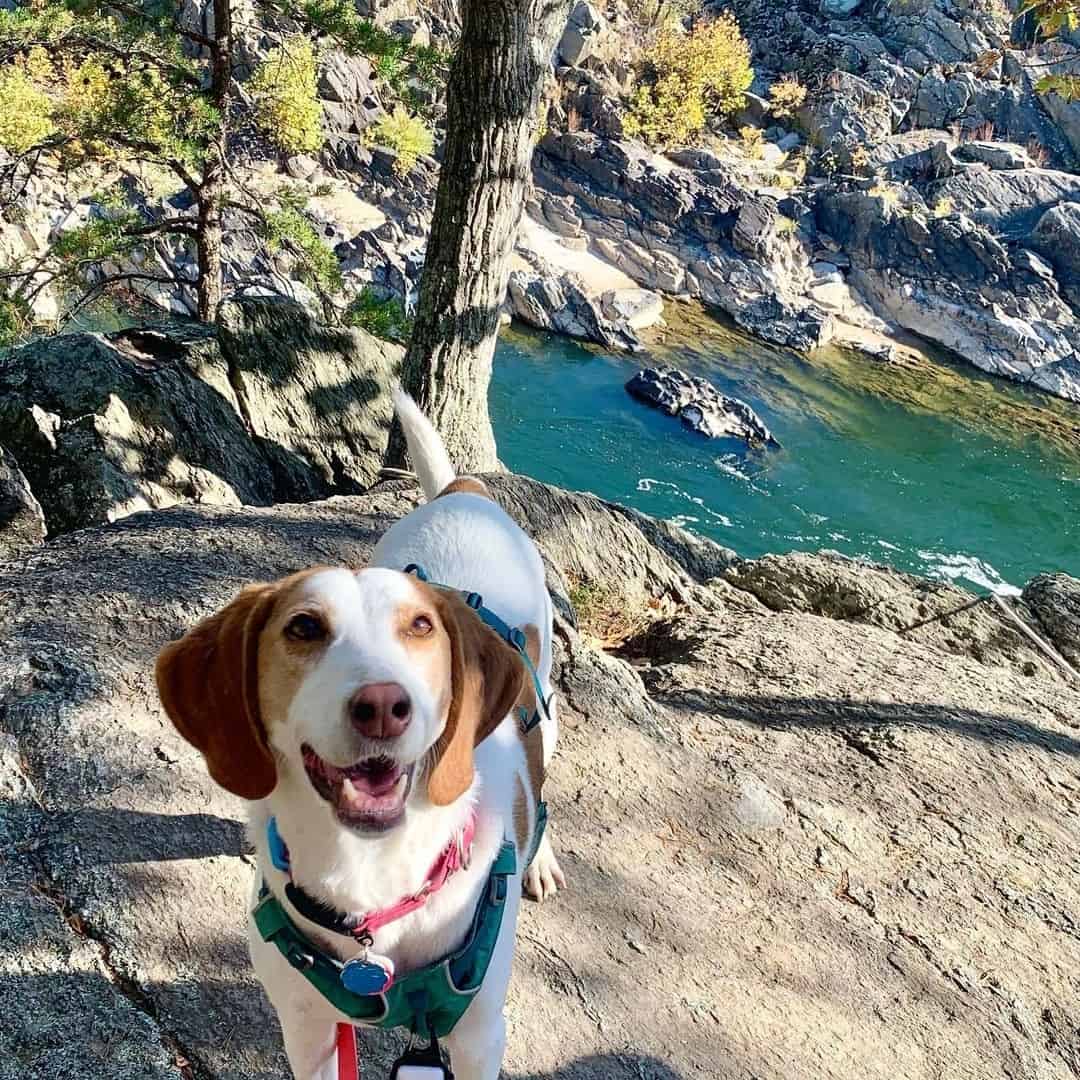
A Labrador Retriever crossed with just about any hound breed results in a Lab hound mix. Lab hounds go by a variety of names, including Dachsador, Beagador, Bassador, as well as many others, reflecting somewhat on the parent breeds they are descended from.
Lab hounds are special canines that possess the intelligence and devotion of the Lab. Nevertheless, why are Labrador Retrievers crossed with hounds in the first place? Would these be dogs superior to purebred Labradors?
All of these queries, as well as others, will be addressed in this manual. In the final section, you’ll also learn where to find the best Lab hound hybrids. Let’s get going!
A purebred Labrador retriever and a hound dog are combined to create a Lab hound mix. Lab hounds are medium-sized to large dogs with remarkable looks. These puppies come in a wide range of hues, designs, as well as sizes.
The Beagador, Bassador, and Dachsador are three well-known breeds of Lab hound dogs.
Origin Of The Species
The most popular pooch in America for a long time has been the Labrador Retriever. Who doesn’t adore a gregarious, outgoing Labrador?
The Labrador is a common dog utilized in crossbreeding as a result. Bringing together different dog breeds intentionally is a relatively new concept that gained popularity just after the 1989 invention of the Labradoodle.
Every time a Labrador crosses with a hound breed, a Labrador hound mix is the result. The calm, intelligent Labrador Retriever breed descended from hunting lineage in Canada’s Newfoundland. They were utilized by fishermen to aid in their strenuous daily tasks.
Depending on the hound breed utilized, the second parent dog’s background would be different. Hounds come in different varieties; thus, generalizations regarding the breed as a whole are challenging.
The main thing that separates hounds, though, is their history of hunting.
Breeders have been able to charge more for Lab mix puppies since there has been a huge demand for them. These dogs immediately gained notoriety as one of the “designer dog breeds“.
Breeders mixed Labrador retrievers with several hound breeds in an effort to develop the next popular designer dog breed. Their goal was to produce a distinctive-looking dog with a temperament similar to the Labrador Retriever.
Unfortunately, Labradoodles continue to be the most well-liked Lab hybrid, unseating the Lab hound mix.
Read More: 5 Reputable Coonhound Breeders
Coonhound Parent Breed
Excluding the German-derived Plott, most AKC-registered coonhounds are developed from British foxhounds that were introduced to the American colonies throughout the 17th and 18th century. This subtle semantic distinction highlights this fact.
They were formerly recognized as the English Fox, and the Coonhound, but the numerous new generation of Southerners who used them while hunting have always referred to them as just “English dogs.”
However, in order to prevent misunderstandings, and make the breed’s American roots clearly evident, the American Kennel Club required that the word “American” be put into the breed description when it approved the breed in 2011.
However, everyone still refers to them as English Coonhounds.
Whatever name you choose, it is undeniable that the purpose of these tough, scent-obsessed canines is to follow raccoons at night and drive them up to tree branches where they wait till a hunter kills them.
While waiting for that moment, the dogs proceed to bay and bark at their target while resting their front paws on the tree.
Labrador Retriever Parent Breed
These classic Labrador Retrievers quickly earned a reputation for their love of the water and their maneuverability in it. They pulled nets as well as long lines, dove for cod that had gotten off of the hook, and perhaps even picked up fishermen’s hats while operating in Newfoundland’s expanding fishery.
As the snow did not build up on their water-resistant coat, the shorter-haired canines were apparently favored over their longer-haired cousins. These canines had striking “tuxedo” patterns on their head, chest, and legs, and they were mostly black in color.
The fisherman of Newfoundland seemed rightfully proud of their canines. The Labrador Retrievers were not only famous for their working abilities, but for their friendly attitudes towards people.
They put their skilful canines on display for the assembled audience by having them collect articles thrown into the sea when their ships loaded with salted cod arrived in Poole, just on the southern English coastline, after sailing across the ocean.
According to Irish dog expert, H.D. Richardson, “those dogs seem to be notable for outstanding diving abilities,” he noted in 1847.
The St. John’s Dog eventually gained popularity as an export to England, and the trade of these canines turned out to be a lucrative side business for ambitious Canadian sailors.
There, it was integrated into several dog lines, and it became the ancestor of all contemporary British retrievers, including Curly and Flat Coats.
The Earl of Malmesbury was among the admiring spectators at those harborside performances in Poole, and he came to the conclusion that the dogs would be excellent in bird hunting on his Heron Court property.
Within a short period of time, a breeding program was started, and it was thanks to this named family that the early moniker, “Labrador Dog,” came to be connected with the breed.
What Would A Coonhound Lab Mix Look Like?
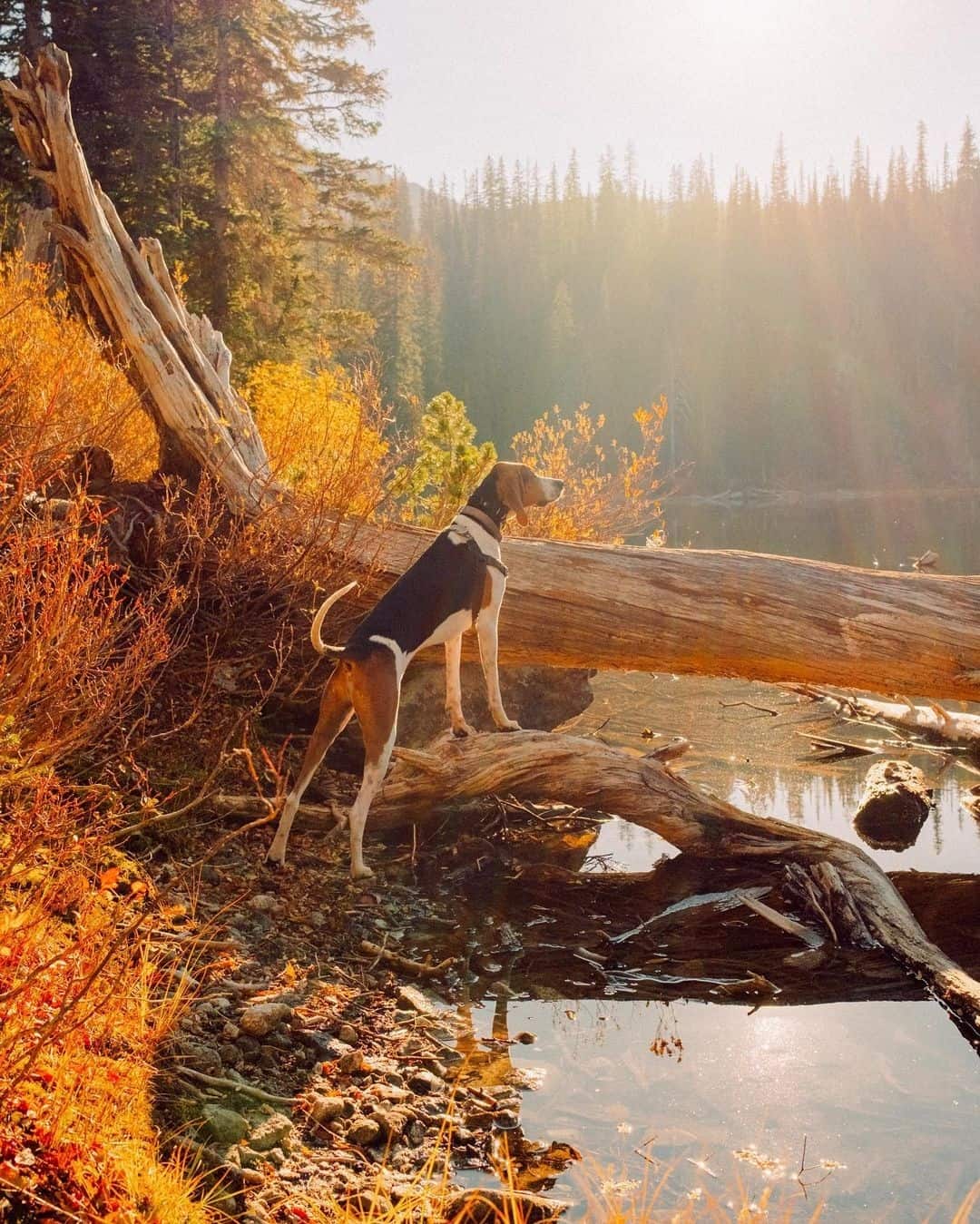
1. Dachshund Lab Mix
A Dachshund and a Labrador Retriever are crossed to create the Dachsador, commonly referred to as the Dachsador hybrid. The size of this mixed breed is somewhere between that of a purebred Dachshund and a Labrador Retriever.
The Dachshund and the Labrador are a bit different in size. Because of that, I advise that you check the Dachshund growth chart and the Labrador Retriever growth chart, so you can see what the possible results may be.
Dachsadors are lively dogs with moderate levels of energy. Their long muzzle, pretty short limbs, floppy ears, as well as sausage-shaped body are distinguishing characteristics.
2. Lab Bloodhound Mix
The descendants of Labrador retrievers and Bloodhounds are referred to as Labloodhounds or Bloodhound Lab hybrids. These dogs are strong, bulky, and muscly.
These canines typically take on their Bloodhound parent’s wrinkly skin. Bloodhounds have three distinct coat colors that are recognizable, just as Labs!
The Labloodhound hybrid is a superior hunter with above-average stamina. They are perfect as working dogs for the army and the police because of these characteristics.
Unfortunately, the average lifespan of these canines is only nine years.
3. Lab Beagle Mix
A purebred beagle as well as a purebred Lab were crossed to create the designer breed known as the Beagle Lab mix.
Beagles are a bit smaller than Labs; therefore, it would be clever to see the Beagle growth chart to know the possible outcomes.
The names “Beagador,” “Labbe,” “Labbe Retriever,” and “Labeagle” are among the many variations of this hybrid. The Beagador is regarded as a designer dog breed, despite the fact that both parent breeds have formal recognition from the American Kennel Club.
4. Lab Greyhound Mix
The tall and sleek Greyhound-Lab cross breed of dog. Its big legs, wide chest, and short ears are distinguishing characteristics. This hybrid breed’s athletic physique comes from the Greyhound parent.
They can be a medium-sized dog because compared to the Labrador, the Greyhound’s growth chart has a bit less lower parameters.
Although having a very athletic body, the Greyhound Lab mix is a couch potato. Although these canines enjoy brief bursts of enthusiasm, they do grow exhausted easily.
5. Bluetick Coonhound Lab Mix
One well-known Labrador and Coonhound hybrid is the Bluetick. Their name is based on the pattern of colors on their coat.
Throughout their body, they have ticks that are blue and white. On occasion, their coat will also contain some brown coloration. They have a short, glossy coat. Future owners may count on this mixed breed of dog to be devoted.
They are very friendly and affectionate, and they pick things up quickly, thanks to their intellect. Due to their coats’ considerable shedding, these dogs aren’t really appropriate for people who have allergies. Early socialization is necessary for these canines.
6. Basset Hound Lab Mix
A Basset Hound and Labrador Retriever combination produces a mixed-breed dog known as a Bassador.
These pups receive some of the greatest qualities from the two parents, including loyalty, occasional stubbornness, and a constant need to smell around.
The names “Basset Lab,” “Basador,” as well as occasionally even “Bassetdor” are all used to refer to Bassadors. Basset Hounds have a distinct growth chart, which we advise that you check out first.
Since bassadors have two very distinct parents, each dog may have a different ideal living scenario.
Bassadors generally enjoy being the center of attention, especially when it comes to their favorite people, and they require a large amount of space to live comfortably. The Bassador can be the dog that you need if you’re looking for a canine with a very distinct appearance and extreme loyalty.
How Big Will A Coonhound Lab Mix Get?
There are three subcategories within the group of dogs known as hounds. Numerous diverse hound dog breeds with various geographic origins can be found within these categories.
It is almost impossible to predict this fact if you don’t know exactly what hound dog breed is the other parent breed besides the Labrador Retriever. One thing is for sure – they won’t be some kind of small dog!
This makes generalizing about hound appearance very difficult. Taking a look at the exact hound employed as a parent will help you forecast your puppy’s size more successfully.
What Kind Of A Personality Does A Coonhound Lab Mix Have?
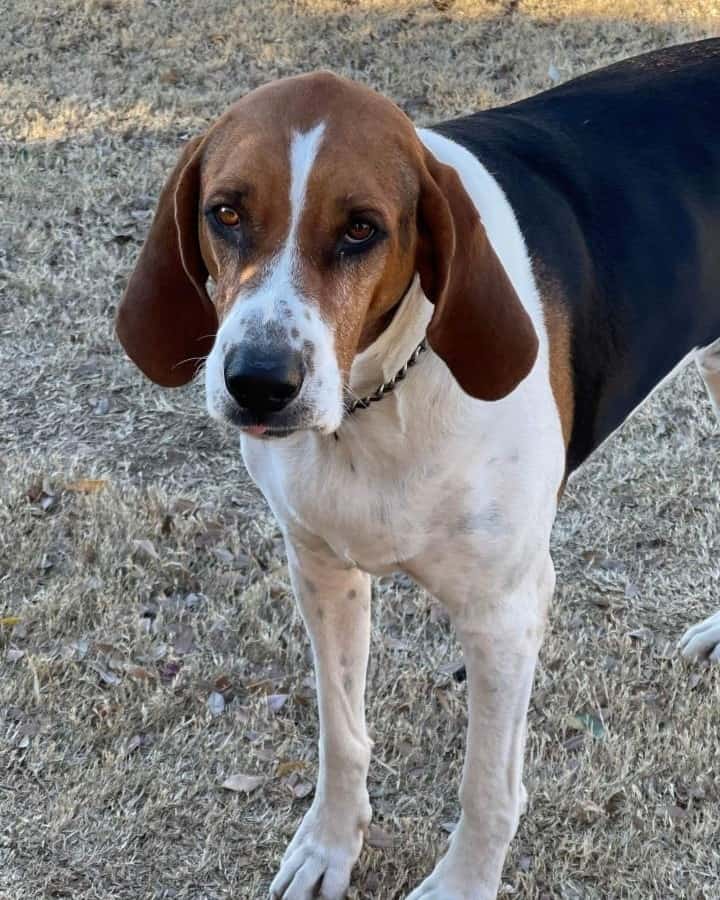
The descendants of Labrador Retrievers and hounds shall reflect the distinct personality types of their parents. This should be recognized before we look at the various Lab hound mix possibilities.
Size is unimportant in this situation! The disposition of any Lab mix, whether it be a tiny or a big one, or black or yellow, depends on the DNA of its parents.
However, keep in mind that temperamental characteristics are inherited randomly, and they can only be “predicted” in broad, generic terms.
Nobody can say for sure what traits a Labrador Beagle mix, a Bluetick Lab mix, or a Bloodhound Lab mix may receive or how they will manifest themselves.
Nature has its little-known mechanism for combining the genetic components of each breed to produce an original cross breed canine.
To assist, have a look at the temperaments of hound dogs and labs in general.
Labrador Retriever’s Personality
Labs have a cheerful, amiable demeanor, they are simple to teach, and they are desperate to impress, which benefits everyone. It makes sense why they are the nation’s favorite canine.
The Labrador Retriever is a well-liked breed for work as a service dog, a search-and-rescue dog, and a police dog due to its high level of energy.
Families should consider getting a lab as a pet, but don’t expect the loving, trusting Lab to act as a fierce guard dog — it’s just not in their character!
The best dog in the United States Of America is also known as one of the best family dogs in the whole world. They are gentle, caring, and affectionate, and they will do anything to make their owner(s) happy.
Coonhound’s Personality
These dogs are not only obedient, trainable, and sociable, but they are also highly intelligent. They also have an inherited ability for hunting and chasing activities. We are now going to focus a bit more on their hunting abilities!
Hounds are notorious for spotting the intended prey of a hunter by utilizing their excellent senses of sight and/or smell. Some hounds possess an incredible gift of speed to go along with their highly-developed perceptive abilities.
Sighthounds are excellent at focusing in on and stalking prey with their laser-like vision.
The heightened sense of smell possessed by dogs in the Scent hound subcategory, however, is used to help them find prey. Scent hounds are employed in the search for the missing because of their keen sense of smell.
Some scientists classify hounds that track prey by using both their sense of smell and sight as a separate group. However, they are all alert, intelligent, and energetic.
Hound dogs are noted for having a special characteristic called “baying,” which is a loud as well as distinctive vocal emission. It’s wise to hear a hound’s baying happen first-hand before taking it home since not everyone enjoys (or is accepting of) it.
Are They Good Family Pets?
Given their eagerness to please their humans, these dogs are unquestionably among the favorite family dogs available!
Fortunately, the majority of Lab hound mixes develop the Labrador’s temperament. These hybrids will undoubtedly have certain hound-parent-specific traits, but overall, they are just as sociable as Labradors.
They are fantastic guard dogs as they can acknowledge an intruder in a very loud manner.
It’s important to remember that hounds are born hunters. These canines can be either scenthounds or sighthounds. Despite this, the Lab-hound mix is perceptive to odd smells and moving objects.
Additionally, some hounds display a behavior known as “baying.” Not all newborns will be tolerant of this loudness; therefore, it is smart to train this dog if you have a baby. Fortunately, it is feasible to teach your dog to produce minimal noise.
Is The Coonhound Lab Mix Good With Other Dogs?
In this case, socialization as well as proper training by using positive reinforcement plays the biggest role.
The hound parent has a natural instinct for hunting and chasing down pretty much everything that it distinguishes as prey; therefore, you will have to start with training and socialization as early as possible.
They generally fit into the category of friendly dogs, meaning that they will be good with other dogs that are smaller or bigger than them.
If not trained, they will still be good with other dogs because of their calm nature; however, they may go crazy if they spot a squirrel, a cat, or pretty much anything smaller than them.
Is The Coonhound Lab Mix A Healthy Dog Breed?
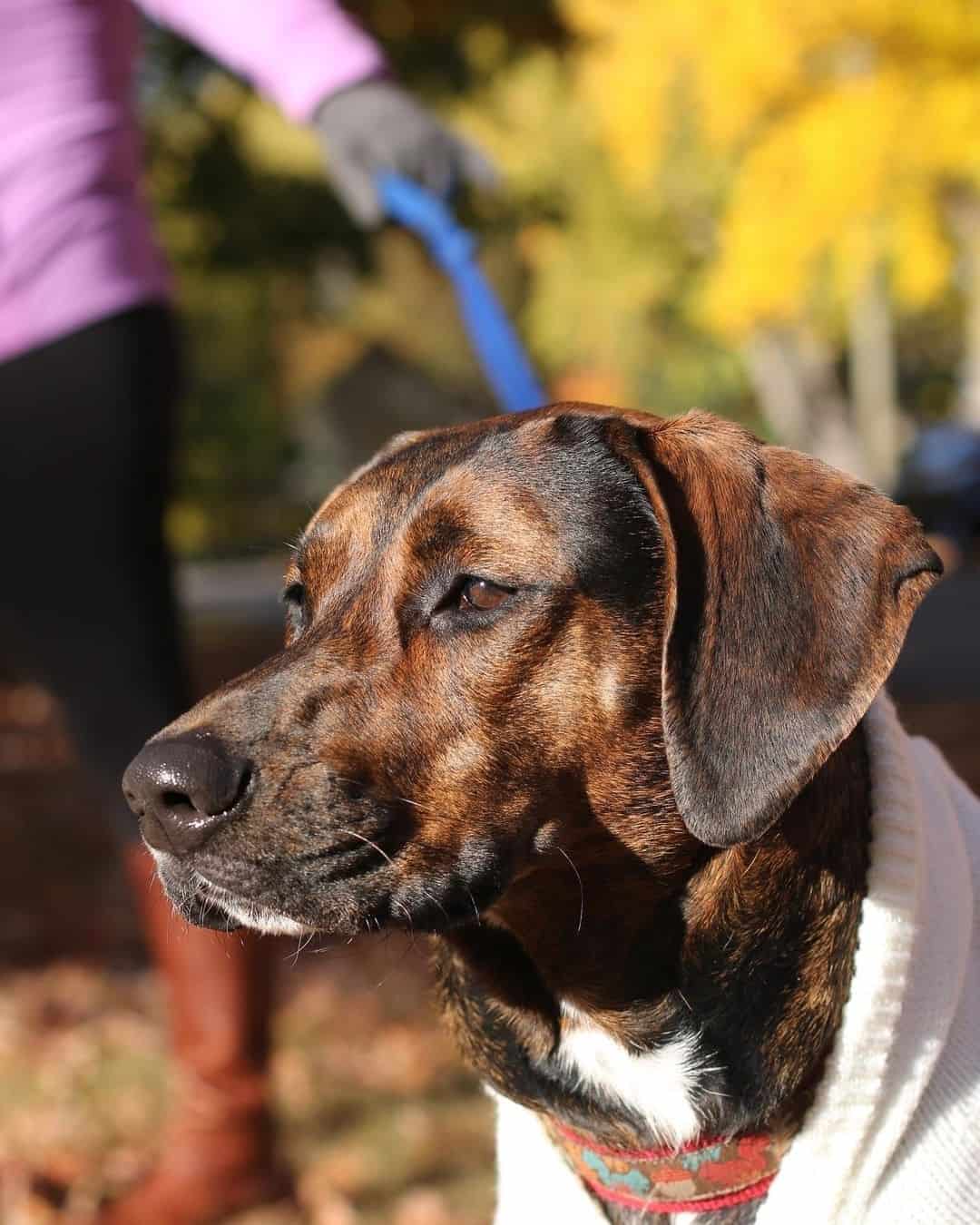
The overall wellness of a Lab hound mix’s parents has the biggest impact on the health of its offspring. Likewise, a dog that has sick parents is more likely to be unwell itself.
Fortunately, a lot of Lab hound breeders are very concerned with their dogs’ health.
Breeders typically screen their canines for hereditary disorders before mating them. However, the health of Lab hounds is still not ideal despite breeders’ best efforts.
Examining the parent breeds is the greatest approach to identifying any health problems that a Lab hound hybrid may experience. Labs are prone to luxating patellas (dislocating kneecap), hip and elbow dysplasia, and other joint conditions .
Cataracts, diseases of the retina as well as the cornea, which both have the ability to cause blindness, are just a few of the prevalent eye issues.
Additionally, owners of Labs must take extra care to keep their canines on a balanced and healthy diet plan due to the breed’s acknowledged risk of obesity. This is one disease that is frequently found in older Labs.
Canine bloat, a disorder, can also affect this breed.
You should look more closely at the particular hound parent being used in order to understand the potential health issues that could result from the hound part of this cross.
Health Problems That The Coonhound Lab Mix May Face
So, how would you tackle the potential health concerns of your Lab hound dog? Start by comparing the details on each hound breed with the information on Lab health risks!
Understanding the probable danger of your dog contracting any one ailment will help you understand how a specific cross breed mix may acquire health issues from each parent.
For instance, the Labrador Retriever as well as the Beagle both have a high incidence of elbow and hip dysplasia. In a Labbe, it is reasonable to anticipate that the risk for such disorders will increase.
Remember that nothing about the dog’s future health is certain or predetermined. We are only able to make general statements about a Labbe’s risk of having hip dysplasia, even considering the health profile described above for Labbes.
Every animal is distinct in the way that inherited traits and upbringing interact to determine development and the final display of attributes.
However, you possess an advantage when compared to assumptions regarding a pup’s health, and when your knowledge stops, that is where the breeder as well as the vet, steps in.
1. Bloat
Bloat, also known as gastric dilatation-volvulus (GDV), is an urgent medical problem in dogs. The stomach of a dog will twist, perhaps cutting off blood supply, which is a sign of GDV.
Bloat frequently manifests as restlessness, heavy drooling, and puking.
Although it can happen at any age, middle-aged dogs tend to experience bloat the most. According to Purdue Academic research, danger rises 20% for every year of age.
According to the American University of Veterinary Surgeons, stomach deformation (both with and without volvulus) has been observed in almost all breeds. However, large dogs with a broad chest are more prone to the ailment than other breeds.
These dogs typically have a high “height to width ratio,” meaning that they are significantly taller than they are wide.
Great Danes, for example, are 5 to 8 times more inclined to have bloat than just a dog with a modest height to breadth ratio, as stated by the American Kennel Club.
2. Hip Dysplasia And Elbow Dysplasia
A hound Lab mix’s hip dysplasia is a medical disease brought on by the ball and socket being out of place.
Hip dysplasia is typically brought on by genetic reasons, although there are certain cases when it is brought on by everyday wear and strain. When moving, a Labrador retriever with hip dysplasia could experience tremendous agony.
Three bones — the humerus, radius, and ulna — combine to form the dog’s elbow joint; these bones must fit snugly together for the joint to work properly. In order to keep the elbow stable, it has ligaments on both the inside and outside.
A dog elbow joints share anatomical similarities with human elbow joints, as although dogs balance on their rear legs, different stresses are imparted to the canine elbow.
Young large-breed dogs frequently get elbow dysplasia. It’s possible that a step forms between the radius as well as the ulna bones in the C-shape of some growing dogs because the radius bone is excessively short.
The ulna bone’s substantial anconeal, coronoid, or humeral cartilage is subjected to more stress as a result. The bone may then develop cracks along the lines of the highest stress or stop growing regularly.
This procedure may potentially harm the cartilage in the joints. The degradation of the bone and cartilage leads to the development of arthritis.
3. Luxating Patella
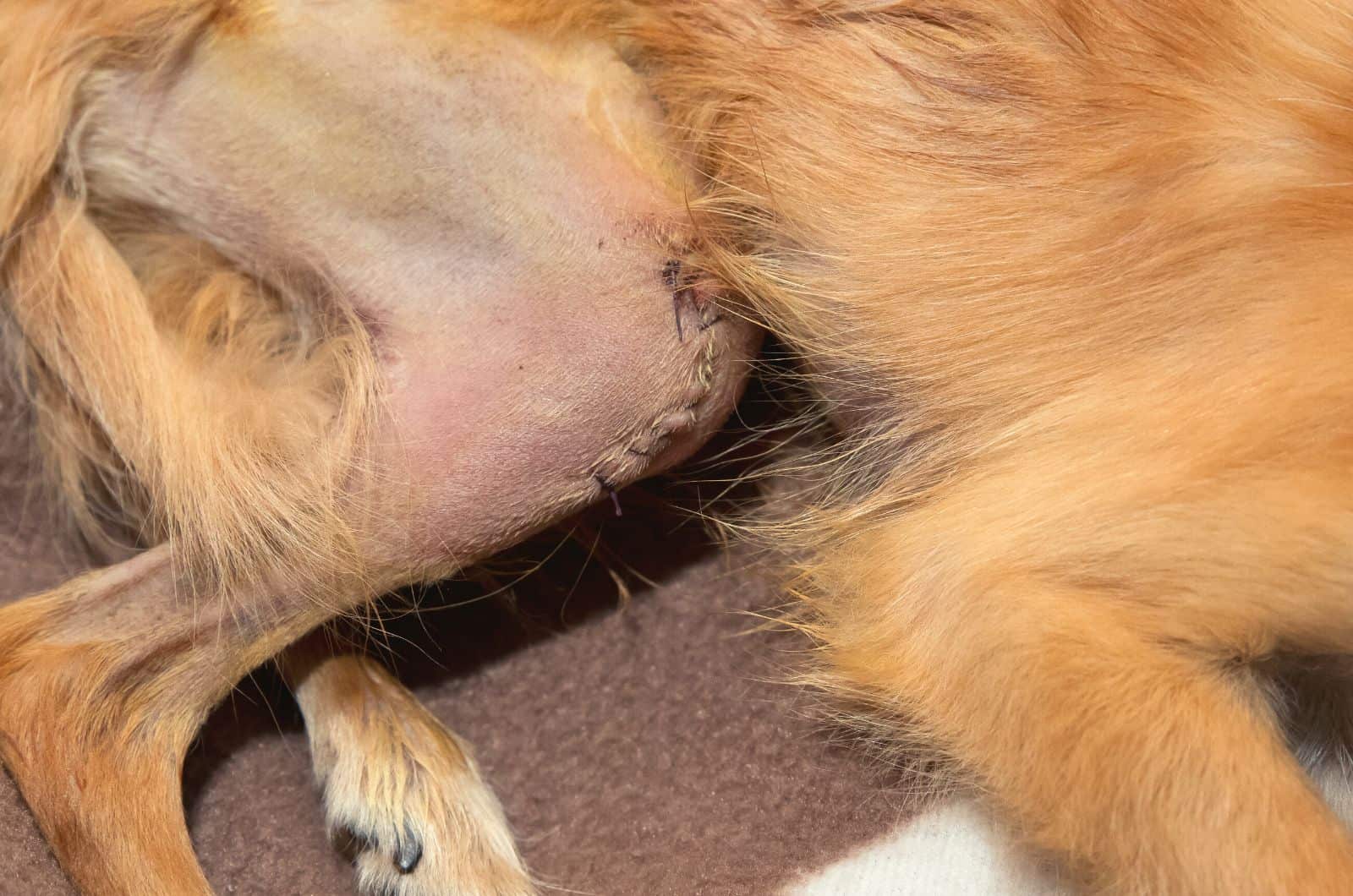
In Labs, a luxating patella is indeed a prevalent problem. Unfortunately, Lab hound mixes frequently inherit this problem.
When a dog’s kneecap is out of place in relation to its femur, it develops a luxating patella. Grades one through four are used to categorize luxating patella cases, and different treatment methods are required for each of these grades.
Since the location of the connection of the patellar ligament does not lie in the middle of the lower leg, the patella may luxate in some dogs, particularly short-legged dogs.
When this occurs, it is nearly always too far away from the middle of the body or the inner portion of the leg. The patella is pulled into the inside of the knee as the thigh muscles tighten, applying force to it.
The interior side of the notch in the femur may deteriorate over several months or even years of aberrant movement. When this occurs, the patella will then be unrestricted and can dislocate or move inside into the knee.
4. Ear Infections
Their cute and droopy ears can sometimes be the root of some health issues!
Fungus or bacteria that becomes lodged in the ears is the main cause of canine ear infections. However, canine ear infections can also be brought on by ear mites, wax accumulation, and allergens.
You’ll soon learn how to recognize the typical signs of an ear infection, but first… were you aware that certain dogs are susceptible to recurring ear issues?
For instance, long-eared breeds like Basset Hounds serve as the “poster dog” for those that frequently contract ear infections.
This is due to the fact that they typically keep their ears covered, which creates an environment that is warm, dark, and moist — perfect conditions for bacterial growth.
However, dogs that swim frequently or have allergies are more likely to develop ear infections. You’ll also observe that persistent ear infections are a symptom of more serious issues, and this should be discussed with your veterinarian.
The most typical symptoms of ear infections include whimpering, head shaking, and scratching the ears.
Because those ears ache, your dog is attempting to numb the discomfort. Nevertheless, you can smell something or notice a discharge as you examine the ears.
5. Obesity
Are you giving your dog too many dog treats and not enough physical activity? Let’s take a closer look at what you may expect if you are doing so.
When your pet is obese, its health, welfare, and quality of life are all negatively impacted by having too much body fat.
We think obesity is a severe problem for a pet’s wellbeing because it can lead to pain and be quite crippling. Additionally, it might make it difficult for your pet to engage in routine activities like exercise.
Any kind of pet can get obese. Obesity is primarily brought on by excessive eating and inactivity, though some illnesses can also be to blame.
The following body condition measurements can help you determine whether your pet is overweight or obese, and if so, you should take it to the doctor to rule out any underlying issues and start a weight-management strategy.
Your pet will be weighed by your veterinarian, who will also get a bodily condition rating. The outcomes are next contrasted with the breed standards.
Make sure your pet maintains a balanced diet and gets plenty of exercise in order to help prevent obesity. Contact your neighborhood veterinarian if you have concerns about your pet’s weight.
What Is The Life Expectancy Of A Coonhound Lab Mix?
The lifespan of lab hounds is generally respectable. These puppies have a nine- to sixteen-year lifespan. A Labrador hound mix’s actual life expectancy, however, depends on the breeds of its parents.
The American Kennel Club (AKC) estimates that the Labrador Retriever lives between 10 and 12 years. While some Lab hounds live a shorter lifetime than purebred Labs, others live a longer one.
The Dachshund and Beagle Lab mixes are two of the Lab hound breeds with the longest lifespan. These dogs have an average lifetime of 12 to 16 years, which is on the longer end of the spectrum.
The Bloodhound Lab mix, on the other hand, is at the other extreme of the spectrum. Labloodhounds sadly only live for nine years.
The Basset Hound Lab mix, the Greyhound Lab mix, and indeed the remaining Lab Hound mixes occupy the center ground. These puppies have a lifespan of between 12 and 14 years.
Maintaining A Coonhound Labrador Retriever Mix
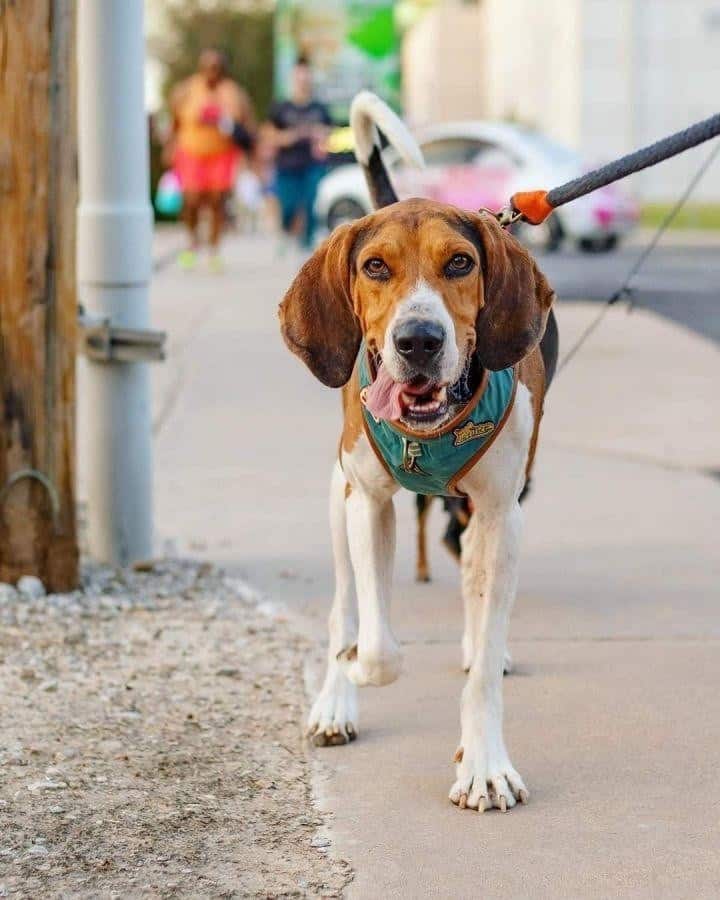
There are a few levels of maintenance when it comes to dogs in general. However, they can generally be classified into a few categories, including feeding, grooming needs, and exercising.
Feeding A Coonhound Lab Mix
Lab hounds are very energetic dogs, especially when they are young. Therefore, you must make sure that the food your Lab hound consumes can meet its energy needs.
Fortunately, reading the labeling on the back of dog food packages is all that’s required to get you pretty much where you need to go.
Make sure to choose kibble that is appropriate for your pet’s age and level of activity. Do not forget that puppy food is not the same as food for older dogs!
A Lab hound should follow a precise food regimen as well. Feeding your dog at roughly the same time each day is preferable. Puppies of Lab hounds should have three meals per day, but adults should only have two.
Grooming Needs
A Lab hound’s cleaning and grooming requirements depend on a few different elements. First of all, it depends on how long your dog’s coat is.
You should brush your hound’s hair more frequently as its coat gets longer. The purpose of this is to prevent mats and tangles, which can harm the condition of your dog’s coat.
Additionally, how well your dog is cleaned relies on its surroundings. The recommended bathing interval for dogs kept indoors is between every four and six weeks.
You shouldn’t bathe your dog as frequently if it is always outside.
Hound breeds, like Labradors, do not shed much on average. During the seasons of shedding, however, this amount rises. The amount of shedding from your mixed breed can be controlled with grooming.
If they possess a shorter, dense coat, like every black Lab has, then a good old brushing a few times a week is usually sufficient for maintenance. They generally aren’t big shedders, and it is easy to keep their shiny coat on point.
However, according to the coat type your mix inherits, grooming requirements may change. For advice, you should speak with your veterinarian.
Training And Exercise
These are intelligent and simple-to-train Lab hounds. However, raising a Lab hound will still require a lot of patience! Positive reinforcement training is the most effective approach to teaching Lab hounds.
Positive reinforcement basically makes use of a reward system. You can encourage or reward your dog when it correctly complies with your instructions. A dog clicker is another option for rewarding behavior!
The minimum amount of daily moderate exercise time required for Lab hounds is two hours. It goes without saying that these dogs are very energetic!
You will most likely need to get this dog tired with a high-energy activity once a day. Whatever activity you choose, they will need at least 40 to 60 minutes of tiring activity a day.
It is highly important that this dog breed has regular exercise not only to stay mentally healthy, but to prevent some possible health conditions.
Thankfully, there are tons of enjoyable activities you can do with your dog. Playing fetch, running with a partner, swimming, as well as going on a hike are a few enjoyable exercises. Even a short stroll will do, together with some interactive dog toys!
Importance Of Early Training And Socialization
It’s critical to socialize young Lab hound mix puppies correctly regardless of the hound breed that was utilized in the mix.
Proper puppy socialization ensures that adult dogs develop into joyful, self-assured, and sociable beings. Aggression toward humans and other animals, especially fear-based aggressiveness, will be reduced as a result.
Therefore, before they turn 12 weeks old, thoroughly introduce your Lab hound mix to as many different objects, people, and environments as you can.
Despite having a nice Labrador as a parent, socialization is still necessary for puppies. Even the most amiable breeds can profit from it!
Your mixed breed dog will be a unique mashup of its parents’ personalities, looks, health issues, etc. In actuality, all of these qualities will combine in a singular and unpredictable way.
The effects of crossing two purebred canines are unpredictable. However, for many people, mixed-breed animals are the center of their world, and they have many happy years of love and companionship together.
Make sure you have the time and resources to devote to one of these canines. The importance of socialization, appropriate instruction, and ample exercise cannot be overstated, and it takes more effort than you initially think.
Final Word
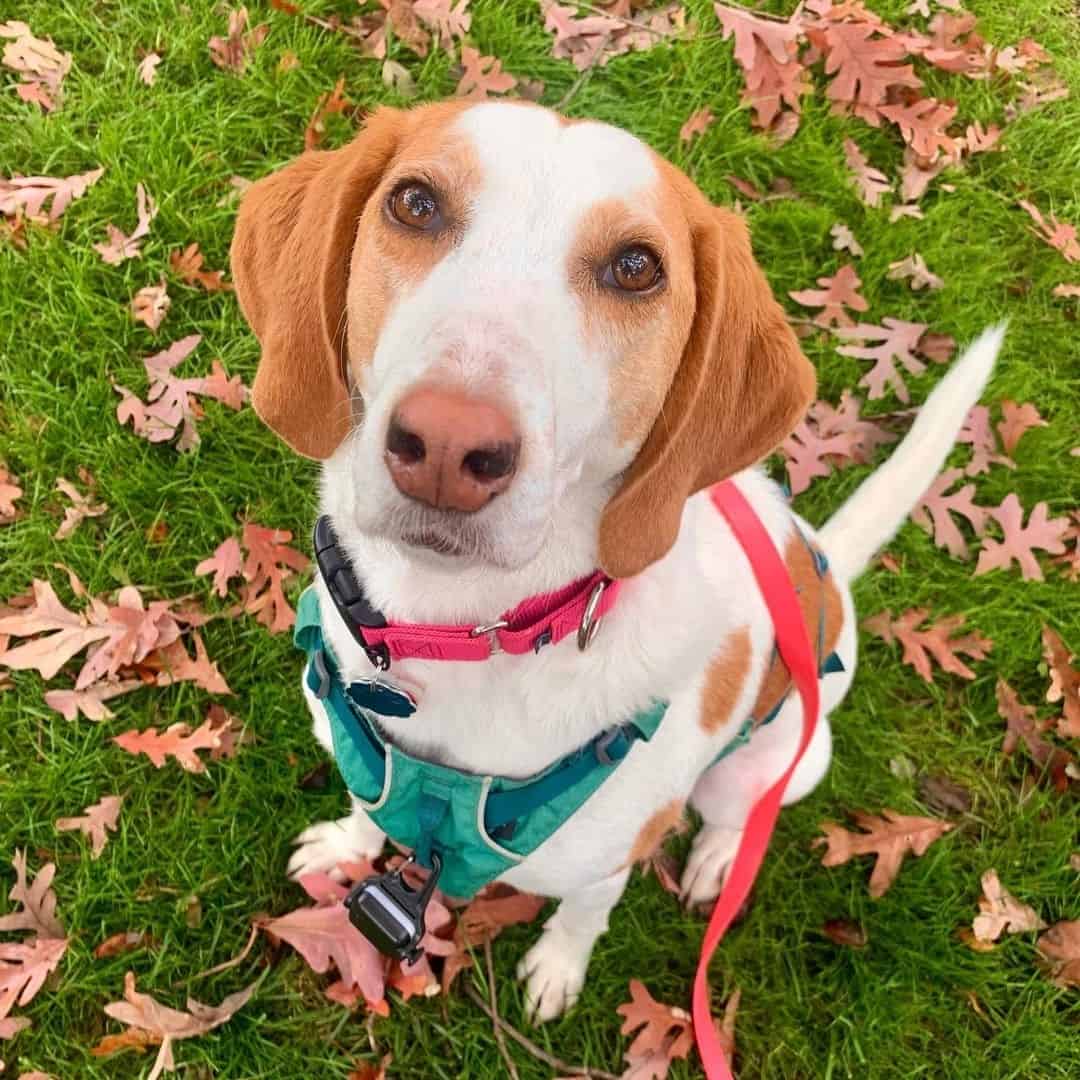
Your Coonhound Lab mix will be a unique mashup of its parents’ personalities, looks, health issues, etc. In actuality, all of these qualities will combine in a singular and unpredictable way.
The effects of crossing two purebred canines are unpredictable. However, for many people, mixed-breed dog breeds are the center of their world, and they have many happy years of adoration and companionship together.
The few important things when deciding upon buying a Coonhound Lab mix are: finding a reputable breeder, having enough time to train it, socializing and exercising this dog breed, and providing it with good-quality dog food and a place to stay.
Make sure you have the time and resources to devote to one of these canines. The importance of socialization, appropriate instruction, and ample exercise cannot be overstated, and can require more effort than you initially think.
Read Next:
The German Shepherd Coonhound Mix: The Ultimate Working Dog?
Treeing Walker Coonhound Beagle Mix — The Perfect Hunter
